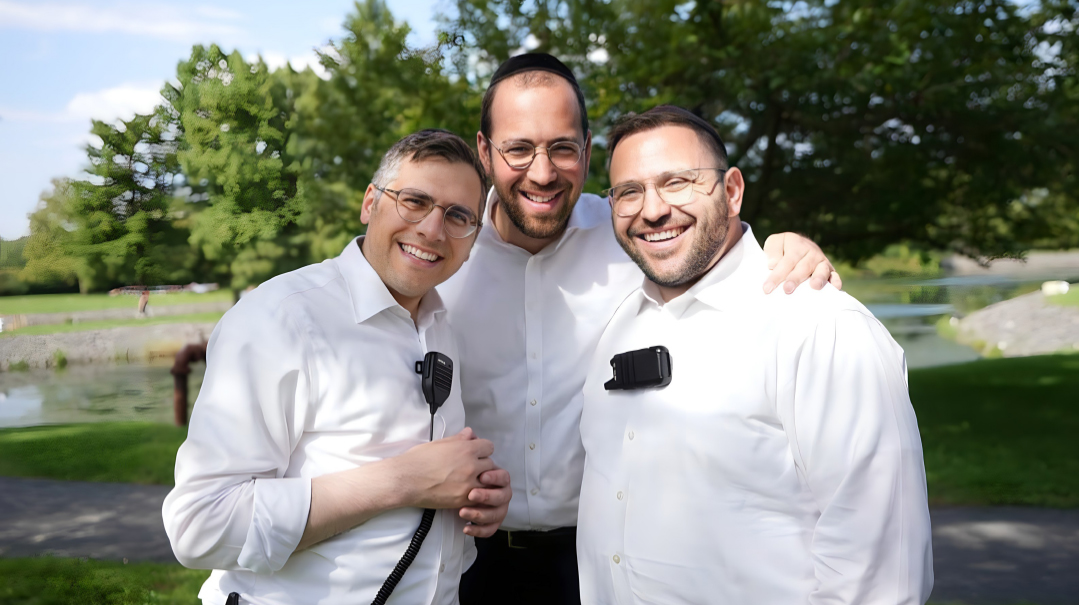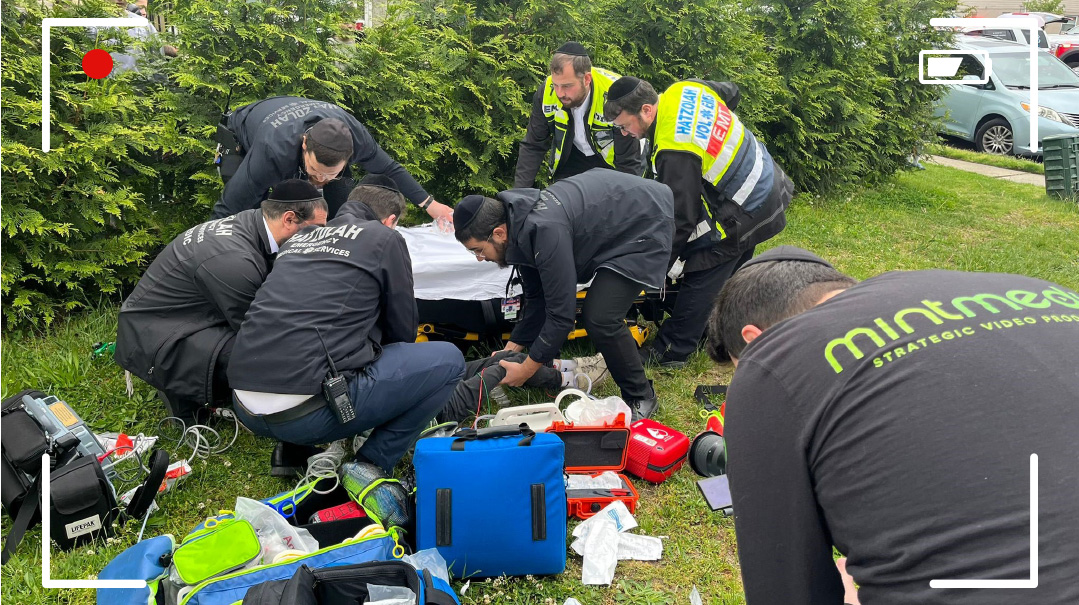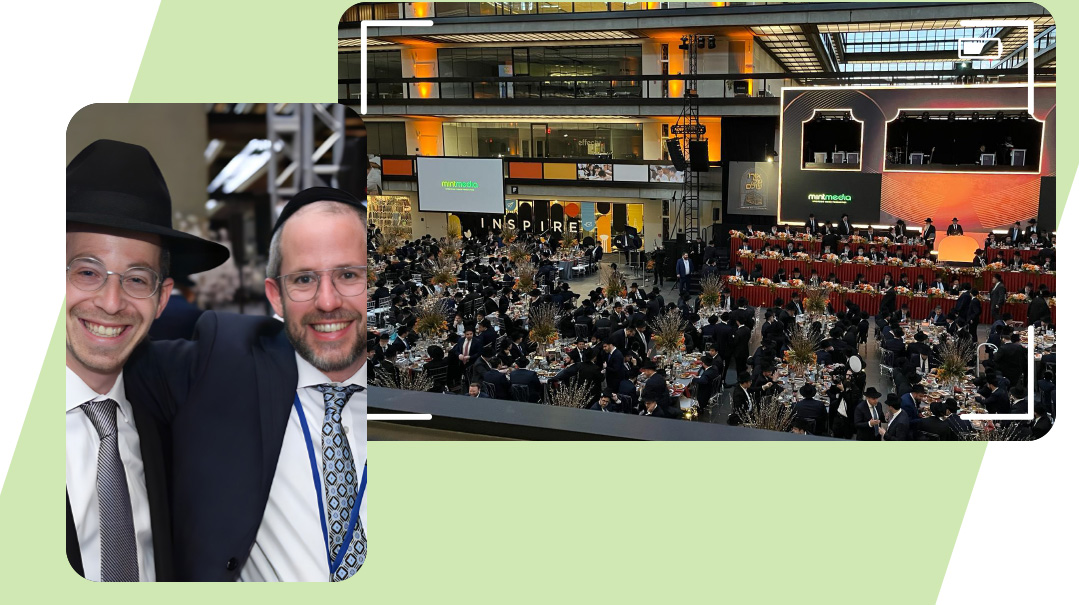Client: Boruch Goldberger / Rav Shlomo Kanievsky
| November 14, 2023An inside look into the life and background of a gadol was an offer we couldn’t refuse

Client: Boruch Goldberger / Rav Shlomo Kanievsky
Objective: Create a full-length documentary on the life of Rav Chaim Kanievsky
Film Locations: Bnei Brak, Israel, and Lakewood, New Jersey
Project Deadline: Summer 2019
The Proposal
Boruch Goldberger is one of my closest friends in the business. He’s a top-of-the-line marketer, overflowing with creativity and always pushing the envelope with original campaigns. Today he’s pretty well-known for launching successful campaigns like the Vzakeini project for Bonei Olam, but back in 2019, he was still relatively new to the marketing scene. Someone had introduced Boruch to Rav Shlomo Kanievsky, who was looking for assistance fundraising for his yeshivos, Tiferes Tzion (a mesivta) and Kiryas Melech (a beis medrash), both in Bnei Brak.
Boruch pitched the concept of putting together a full-feature documentary about Rav Shlomo’s father, Rav Chaim Kanievesky, and then ending the video with a brachah for those who help with the campaign. Rav Shlomo was very enthusiastic about the idea, explaining that fundraising aside, it would be a tremendous benefit for the world to get an inside look at the gadol hador.
Boruch then called me. To say the idea of building a documentary about the gadol hador was daunting is the understatement of the century. It would be a tremendous responsibility, with care taken with every line of the video. It would also be highly challenging, as the “main character” or focus of the documentary, Rav Chaim himself, wouldn’t be giving any sit-down interviews. On the other hand, I knew I’d regret turning down this opportunity, so with some level of trepidation we agreed to produce the video.
Production
We realized early on that the spine, or the central piece of the documentary that would carry it, would be Rav Shlomo’s perspective as a child growing up in the home of Rav Chaim. This would both provide us the necessary content, as we wouldn’t be getting it from Rav Chaim himself, and connect the video to Rav Shlomo’s yeshivos. We also prepared extensive narration pieces, ranging from 30 to 90 seconds each, which would allow for seamless transitions between the different chapters of the storyline.
The interview session with Rav Shlomo was fascinating — we got a firsthand account of what it’s like to grow up in such a special home. Rav Shlomo spoke in Yiddish, so in postproduction we hired someone to transcribe and then translate so we could add subtitles for our English-speaking audience.

Begging for B-Roll
B-roll is an industry term for secondary footage. In a typical yeshivah dinner video, for example, the interviews are the main footage, and the shots of the boys learning fall under the B-roll category. We rely on B-roll to help transmit the message in a visual manner, and also to allow us to take bits and pieces from interviews without the cuts looking too choppy; having footage to play over the audio gives us that freedom.
On a typical project, sorting through hours of B-roll footage is from the more monotonous parts of our process. We often divide the job among the staff to keep anyone from burning out from hours of staring at their screen, choosing the best clips from eight grades with four parallel classes each (it gets repetitive, to say the least).
With this project, we had the opposite issue: Everyone wanted to sort through the B-roll. It meant getting a close-up view of Rav Chaim in his day-to-day interactions and seeing a side of him not necessarily known to the public.
As a side note, Boruch pointed out how incredible it was to see that Rav Chaim didn’t seem to notice the cinematographer, paying no attention to the men filming him as he went about his daily schedule. Anyone who had the privilege to walk into the apartment in Rechov Rashbam 23 knows that it’s not very large. Now picture two cameramen, along with their bulky equipment, crowded into the area. It’s pretty hard to ignore them, and yet to Rav Chaim, his seder was his seder, and he didn’t do anything different for the cameras. We’ve filmed many choshuv people over the years, but Rav Chaim’s complete indifference to being in the focus of the lens was unmatched.
As was his unrelenting schedule! The cameramen filmed in rotations, as no one or even two people were able to keep up with the gadol’s exhausting daily routine.
In Context
To build a proper documentary about a person, you want to be able to show not just his immediate family, but also the generations that preceded him; this gives viewers a sense of context and history. The Kanievesky family has very illustrious roots with luminaries such as the Steipler Gaon, Rav Yosef Shalom Elyashiv, Rav Aryeh Levin, and others. We were given access to many rare archived pictures, but not all of them were of the quality we needed to complete the family tree, especially as we went further back. For example, we did not have a quality photo of Rebbetzin Batsheva Kanievsky’s great-grandfather, the Leshem.
Boruch had the novel idea of commissioning an artist to create realistic renderings of all of the people we wanted to feature. This would give us the clarity we were aiming for, as well as create a uniform look for all of these family pictures.
Jeremy Lewis of our VFX department built custom animations in which these pictures would grow on the Kanievsky family tree. One day, I was reviewing our interview footage of Rav Shlomo Kanievsky when inspiration struck. We had done the interviews in a private home, and there were several framed photos visible in the setup. This isn’t uncommon; most private home interviews are in a study or living room, which both feature family photos. Usually, we deal with them in the editing stages, either by removing them or by adding a soft blur so the faces are unrecognizable.
“How difficult would it be to replace the private family photos with our renderings of the Kanievsky family?” I asked Executive VFX Director Mordy Fisgus. “The frames are set up so nicely on the furniture, it would make the setting much warmer with that personal touch.”
Mordy agreed that since the camera was “locked down” with no movement in the clips, it would be a relatively simple and smooth edit, and he switched the pictures, blending them into the frames that were already there.
Last-Minute Snags
The whole idea of the video was pretty daring. In another bold marketing move, Boruch wanted to send out 100,000 DVDs of the video — literally around the world. We contacted a company in Pennsylvania that could produce such a large order. They told us they’d need a master DVD by a specific date so they could prepare and send us a test copy, and once we approved it, they could burn 99,999 more copies in time for the campaign’s release date. There are always last-minute changes, so I held off on burning the final video onto a DVD until the night before their deadline.
Of course, all went smoothly as planned. Not.
No matter how many times I tried to burn the disc, it just wouldn’t work properly. I couldn’t get the program to copy the video — it kept churning out blank DVD after blank DVD. After close to eight hours with no progress, I left the office for a few hours of much-needed sleep. I returned early the next morning to try again, but after a few hours I was still getting similar results (or lack thereof). I will admit that the thought crossed my sleep-deprived mind that maybe Rav Chaim didn’t want the publicity, and was pulling some heavenly strings to block the film’s release….
Eventually one disc did burn correctly. I immediately hired a driver to take it directly to the company. I also made a risky decision.
“We’re waiving the test copy — just go ahead and burn all of them,” I said.
It was important that we had the DVDs ASAP, and we just couldn’t wait for that back and forth.
Critical Review
As the most comprehensive documentary of Rav Chaim for an English-speaking audience, A Glimpse into Greatness had universal appeal. Aside from the DVDs, it received more than 200,000 views online. The documentary took off to a whole new level close to three years later, after Rav Chaim’s petirah, with people desperate for some form of connection to help process the tragedy. Many schools and seminaries asked for permission to do a mass showing of the video for their students, and thousands more watched it online.
Interestingly, a lot of viewers assumed the video was put together after Rav Chaim’s passing and were confused by the present tense and the term “shlita” that was used when referring to the gadol hador.
Callback
I was in Eretz Yisrael the Succos following the video’s release, and I contacted Rav Shlomo Kanievsky to let him know I was in the area. He immediately helped make arrangements for me to meet with his father. Friends had told me that audiences with the gadol rarely last more than a minute, and I prepared a few questions accordingly. When I entered the small room though, Rav Chaim’s grandson leaned close to his grandfather and explained how I was able to help Rav Shlomo with his campaign. That must have changed the standard allotted time for appointments, because suddenly I had all the time I could want. I actually ran out of material to discuss with Rav Chaim!
But just being able to spend time in the gadol hador’s presence was enough, and if producing the video gave me a glimpse of greatness, seeing it up close and in person gave me precious memories I’ll be sharing with my grandchildren one day.
(Originally featured in Mishpacha, Issue 986)
Oops! We could not locate your form.







